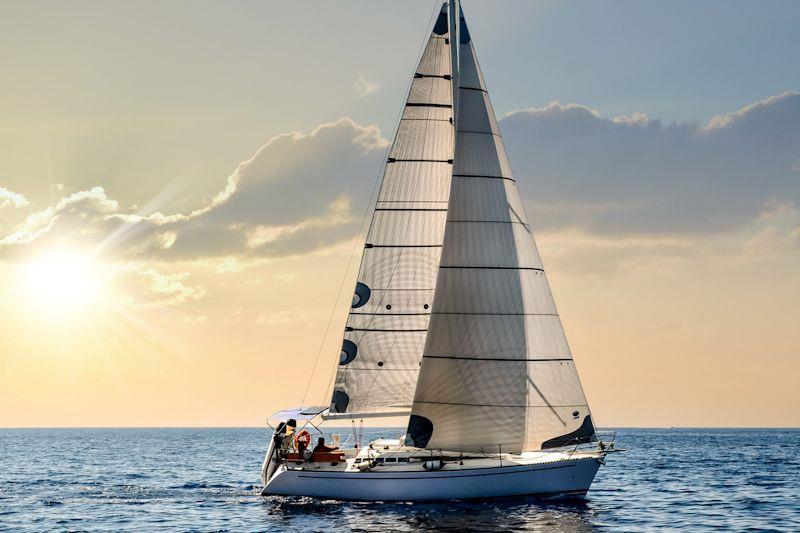
Jefa Autopilot Direct Drives - Simply the Best?
by Calanach Finlayson 3 May 2023 17:00 BST

What makes up a good autopilot system and why the details matter © Jefa
The Jefa direct drives are something of a hallmark in autopilot drive engineering. Every aspect has been designed from the ground up to create an efficient, powerful and long-lasting pilot drive. In this article we explore what makes up a good autopilot system and why the details matter.
The below diagram from Jefa shows the basic components necessary for a good autopilot system. This is the same regardless of manufacturer. Let's briefly run through the system...
Autopilot control head
The brains of the operation. The pilot computer receives instrument data and calculates the required output control signals to maintain the programmed course (be that heading hold, TWA hold etc).
Rudder feedback unit
Measures the real angle of the rudder and feeds this back to the pilot computer. It is not enough to rely on the expected rudder angle.
Fluxgate compass
Provides the computer with vessel heading which is core to autopilot functionality.
Drive unit
Receives control commands from the pilot computer and translates these into mechanical actions to steer the boat. The drive unit is the component we are discussing in this article.
Linear vs direct vs hydraulic
The majority of electro-mechanical drives on the market are linear, meaning the actuator is effectively a telescopic tube which extends and retracts to move the rudder. This can be connected directly to the tiller arm below deck. Linear drives typically use a worm screw or ball screw to translate the rotary motion of the motor into a linear motion.
Conversely, direct drives use a planetary gearbox and feature an output arm which is linked to the steering system via a drag link.
The alternative to electro-mechanical is hydraulic. Hydraulic drives are also a type of linear drive but with the additional complication of a hydraulic fluid, pump etc.
Hand steering
An inherent drawback of linear drives is the added resistance when hand steering and back-driving the system. Even with the clutch disengaged, you are still pushing against the gears. Similarly, in a hydraulic drive you have all that hydraulic fluid to push through the system.
With the Jefa Direct Drives, the only component which remains connected after the clutch is disengaged is the tiller arm, running in a ball bearing. The net result is virtually zero additional resistance when hand steering the boat.
The motor and PWM
Most off-the-shelf brushless DC motors are designed to run continuously, at constant speeds. The use profile for an autopilot couldn't be further from that, partly due to something called pulse width modulation (PWM). PWM is used in modern pilot computers to better control motor speed using a series of short pulses, instead of a continuous on/off signal.
The Jefa direct drives feature a low inertia, flat wound motor. That might sound trivial but this is where the details matter. The benefit of this lightweight motor is low starting voltage & better start/stop control.
Gears
Jefa Direct Drives feature a planetary gearbox for superior efficiency and reduced wear as the load is spread evenly across a larger number of gear teeth. This is particularly important for boats with heavy steering wheels which themselves have high inertia and can destroy the gear teeth on some pilot drives.
Drawbacks?
Weight is the big one. The Jefa DD1 (suitable for boats up to 45ft) comes in at a sizeable 12kg which is almost double the weight of its equivalent sized linear drive. While this isn't an issue for the heavy displacement blue water cruiser, it's non-trivial for most racing yachts.
Although not really a drawback, a small point worth noting with the Jefa Direct Drives is they do require regular (but infrequent) maintenance, just like any other machinery on board. Jefa recommends a full service every 5-6 years.
Takeaway
There is little doubt that the Jefa Direct Drive is a superior unit than most alternatives on the market. But whether it's the right option for you is less clear cut. Many racing yachts choose electro-mechanical linear drives in order to minimise weight.
On the other hand, if you are setting off to sail around the world on a heavily laden cruiser, then the reliability and efficiency of the Jefa Direct Drive is a no-brainer.
If you have any questions please feel free to email us at , or click the link below to see our full range:
